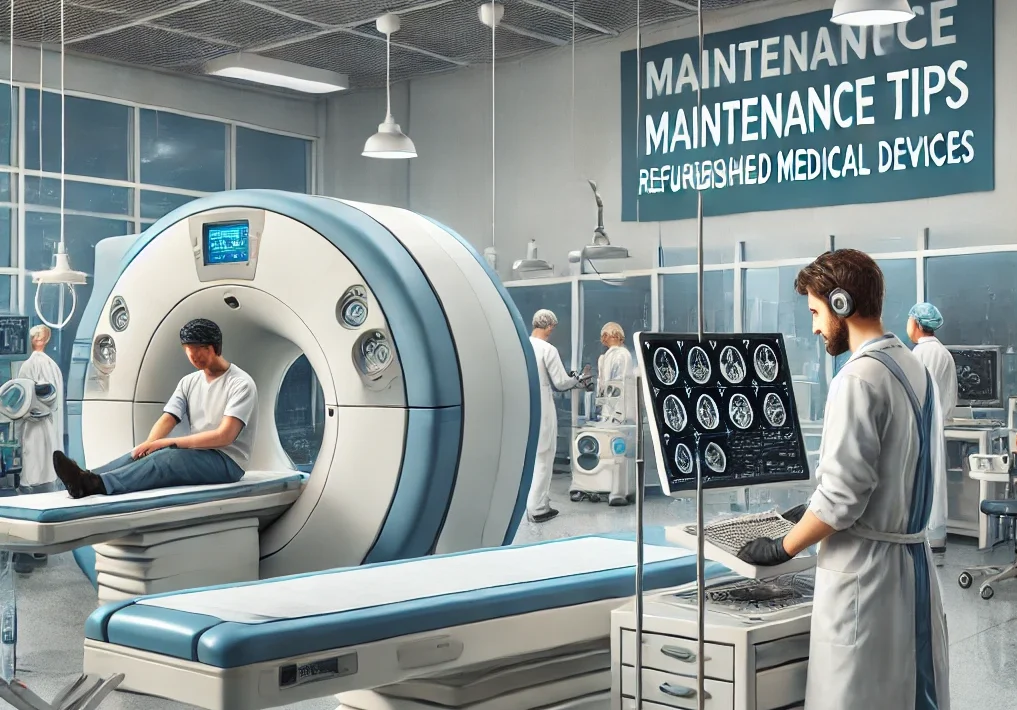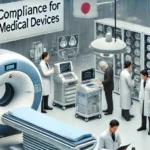

Maintenance Tips for Refurbished Medical Devices
Refurbished medical devices offer hospitals, clinics, and healthcare providers a cost-effective alternative to purchasing brand-new equipment. These pre-owned systems—such as MRI scanners, ultrasound machines, patient monitors, and endoscopes—are restored to meet original manufacturer standards, providing reliable performance at a fraction of the cost. However, to ensure their longevity, accuracy, and safety, proper maintenance is essential. Unlike new equipment, refurbished devices may have unique considerations due to their prior use. Below are expert maintenance tips to keep refurbished medical devices in top condition, maximizing their value and ensuring optimal patient care.
1. Follow Manufacturer Guidelines and Service Schedules
Every medical device, whether new or refurbished, comes with manufacturer-specific maintenance recommendations. For refurbished equipment, adhering to these guidelines is critical to preserve functionality and comply with safety regulations. Upon acquisition, obtain the device’s service manual—either from the refurbisher or the original equipment manufacturer (OEM)—and review its recommended maintenance intervals, calibration procedures, and part replacement schedules.
For example, a refurbished CT scanner might require quarterly calibration of its imaging sensors, while an ultrasound machine may need annual transducer checks. Schedule regular preventive maintenance with certified technicians to address wear-and-tear components like belts, filters, or batteries before they fail. By staying proactive, you can avoid costly downtime and ensure the device performs as expected.
2. Train Staff on Proper Handling and Use
The longevity of refurbished medical devices heavily depends on how they are handled daily. Improper use can accelerate wear or cause malfunctions, particularly in devices with delicate components, such as endoscopy systems or patient monitors. Invest in comprehensive training for all staff members—doctors, nurses, and technicians—who interact with the equipment.
Training should cover operational protocols, cleaning procedures, and storage guidelines specific to each device. For instance, refurbished MRI scanners require careful attention to magnet cooling systems, while ultrasound probes must be cleaned with approved disinfectants to avoid damage. Well-trained staff reduce the risk of user error, extending the device’s lifespan and maintaining its reliability for critical healthcare tasks.
3. Perform Regular Cleaning and Sterilization
Refurbished medical devices, like their new counterparts, must be kept clean to prevent contamination and ensure patient safety. However, because these devices have a history of prior use, extra vigilance is warranted. Establish a routine cleaning schedule tailored to each piece of equipment, using only manufacturer-approved cleaning agents and methods.
For example, refurbished endoscopes require meticulous cleaning and sterilization of their scopes and channels to prevent infections, while patient monitors need regular wiping of screens and sensors to remove dust and residue. Avoid harsh chemicals that could degrade refurbished components, such as plastic casings or rubber seals, which may already have some age-related wear. Consistent cleaning not only enhances safety but also preserves the device’s operational efficiency.
4. Monitor Performance and Calibrate Regularly
Refurbished devices may have undergone extensive reconditioning, but their performance must be monitored to detect subtle shifts that could affect diagnostic or therapeutic outcomes. Regular calibration is key to maintaining accuracy, especially for imaging systems like refurbished MRI or CT scanners, where precise measurements are non-negotiable.
Implement a performance tracking system—manual logs or software-based monitoring—to record metrics like image quality, signal strength, or response time. Schedule calibration checks with qualified biomedical engineers, ideally in line with the refurbisher’s recommendations or industry standards (e.g., every 6-12 months for diagnostic equipment). Early detection of deviations allows for timely adjustments, preventing larger issues that could compromise patient care or lead to expensive repairs.
5. Partner with Certified Service Providers
While in-house maintenance teams can handle routine tasks, refurbished medical devices often require specialized expertise for repairs or part replacements. Partnering with certified service providers—preferably those recommended by the refurbisher or OEM—ensures that repairs meet regulatory and quality standards. This is particularly important in regions like Japan, where the Pharmaceuticals and Medical Devices Agency (PMDA) sets strict guidelines for medical equipment upkeep.
For instance, a refurbished patient monitor might need a new circuit board, or an MRI system could require a helium refill for its magnet. Certified technicians have access to authentic parts and the technical know-how to address these needs without voiding warranties or certifications. Establish a service contract to streamline maintenance and gain priority support, minimizing disruptions to healthcare delivery.
6. Store Equipment Properly When Not in Use
Proper storage is often overlooked but plays a vital role in maintaining refurbished medical devices. Exposure to extreme temperatures, humidity, or dust can degrade components, especially in older refurbished units. Follow storage guidelines specific to each device: keep ultrasound probes in protective cases, store patient monitors away from direct sunlight, and ensure MRI or CT scanners remain in climate-controlled environments.
For portable refurbished devices, such as defibrillators or handheld ultrasound units, use designated storage carts or cabinets to prevent accidental drops or damage. Proper storage reduces wear on moving parts and electronics, preserving the device’s condition between uses and extending its operational life.
7. Keep Spare Parts and Software Updated
Refurbished equipment may rely on components that are no longer in production, making spare parts a critical consideration. Work with your refurbisher or supplier to identify and stock essential spares—like X-ray tubes for CT scanners or transducers for ultrasound systems—before they become obsolete. This foresight prevents prolonged downtime if a part fails unexpectedly.
Additionally, ensure the device’s software remains current. Refurbished systems often come with updated firmware, but ongoing patches or upgrades may be released to improve functionality or address security vulnerabilities. Regularly check with the refurbisher or OEM for software updates, and install them promptly to maintain compatibility and performance.
Conclusion
Refurbished medical devices are a smart investment for cost-conscious healthcare providers, but their value hinges on diligent maintenance. By following manufacturer guidelines, training staff, cleaning routinely, monitoring performance, partnering with experts, storing properly, and keeping parts and software current, you can maximize the lifespan and reliability of these systems. In 2025, as the refurbished equipment market continues to grow, these maintenance practices will be essential to safeguarding patient outcomes and protecting your investment. With the right care, refurbished devices can deliver years of dependable service, proving that cost savings and quality care can go hand in hand.
Add a comment Cancel reply
Related posts


Regulatory Compliance for Refurbished Medical Devices

New vs. Refurbished Medical Devices: Making the Decision

Refurbished Surgical Instruments from Japan: Precision, Quality, and Value
Japan Address
COMFYS JAPAN LLC, R Cube Aoyama 3rd Floor, 1-3-1 Kita-Aoyama, Minato-ku, Tokyo 107-0061,Japan
Africa Address
Comfys International Limited KP Offices, Suite 26 Milimani, Nairobi, KENYA




